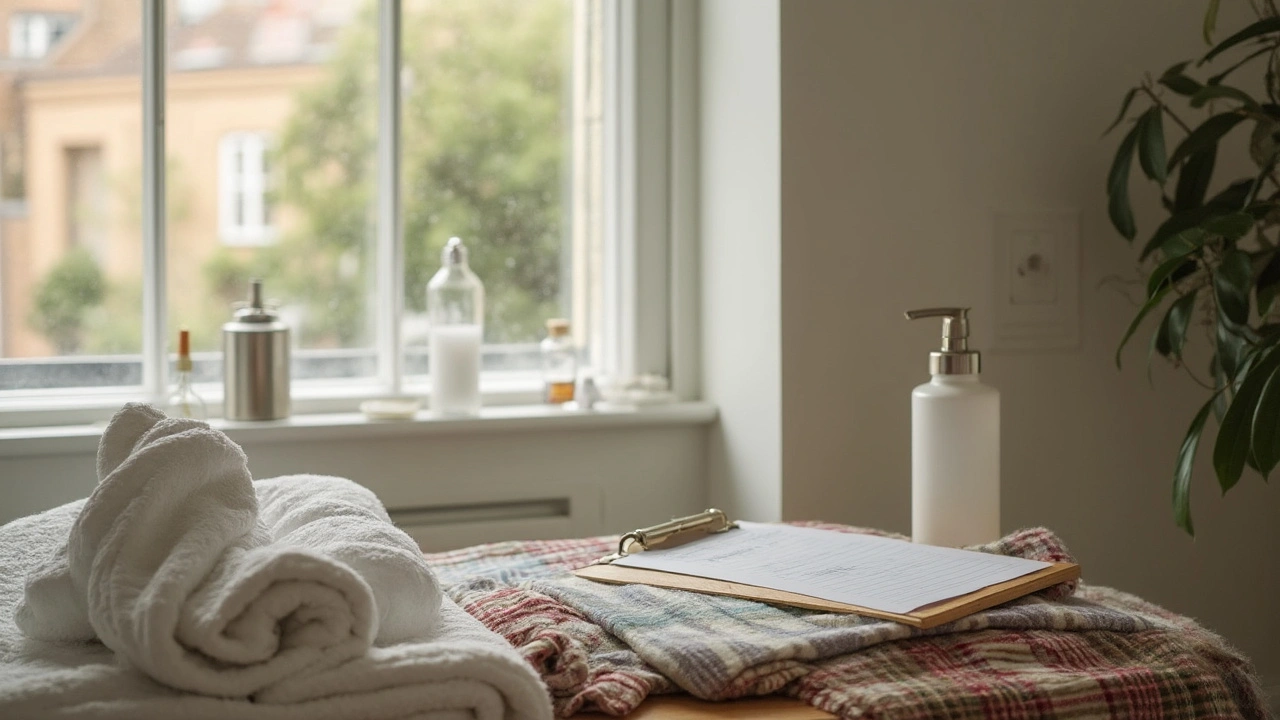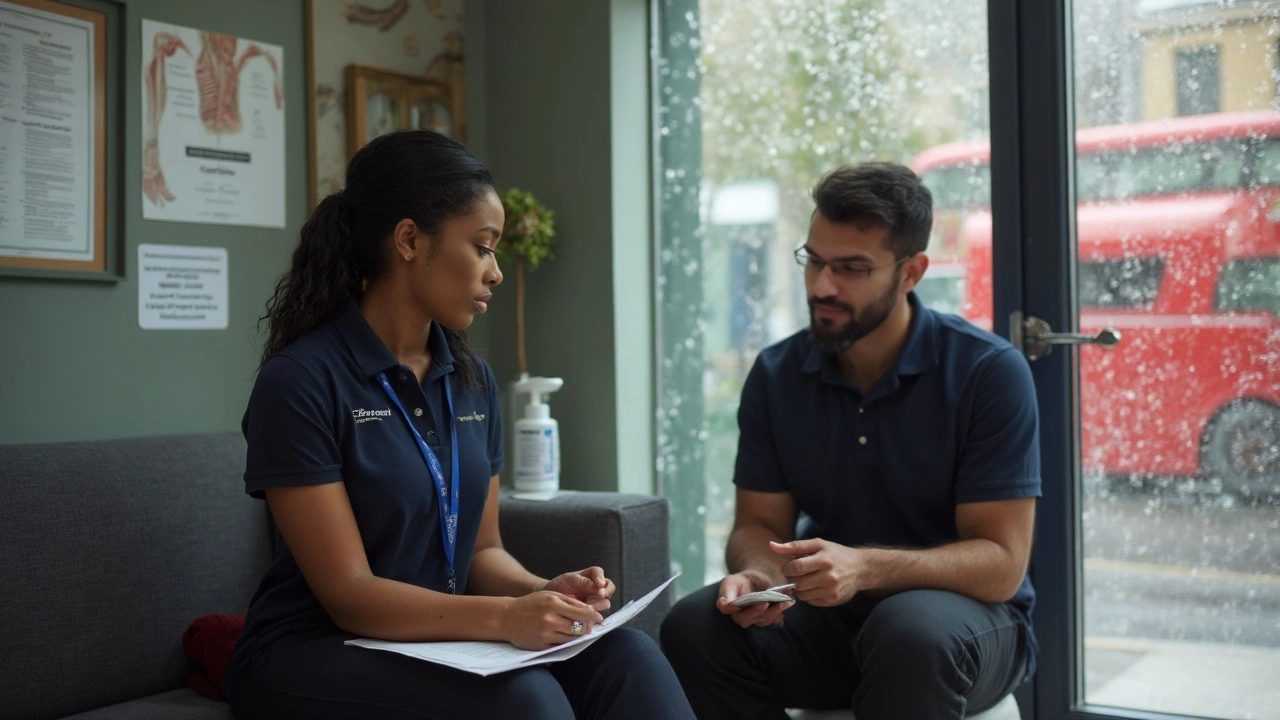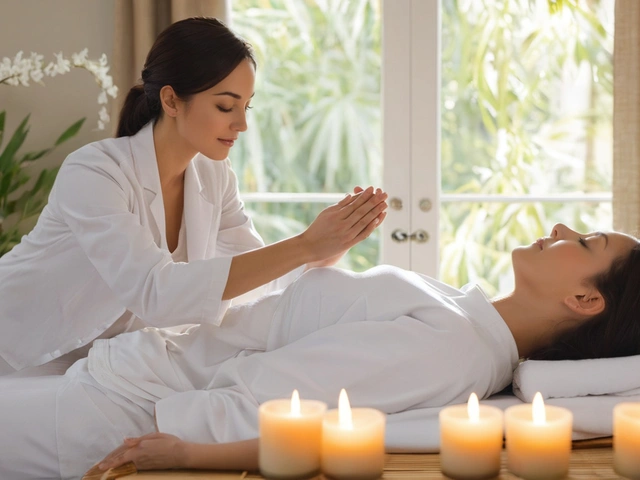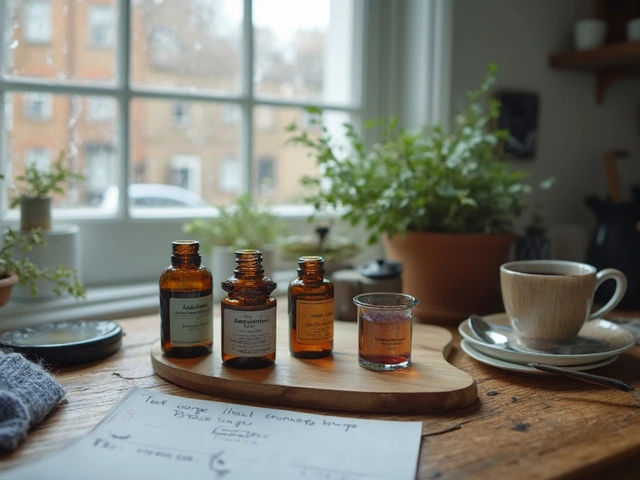Swedish Massage Guide: Techniques, Benefits, and Full-Body Relaxation

Most people book a massage hoping to melt stress, loosen tight shoulders, and finally sleep like a rock. Then they hit the table and wonder, “Am I doing this right? Is Swedish the one I need?” Here’s the straight answer: if your goal is calm nervous system + happy muscles without painful digging, you’re in the right neighborhood. I’ve dozed off mid-session more times than I can count, and even my husband, Travis, who swears he’s “not a spa guy,” walked out mumbling, “Okay… I get it now.” This is your clear, no-fluff path to a massage that actually relaxes your whole body.
TL;DR: What Swedish Massage Does and How to Make It Work
- It’s a gentle-to-moderate pressure style focused on soothing the nervous system, improving circulation, and easing everyday tightness.
- Expect long, gliding strokes, kneading, circular friction, gentle tapping, and light joint movements. No deep digging unless you ask.
- Best for stress relief, sleep, and general tension. Not a fix for serious injuries; think “reset,” not “rehab.”
- Prep right: arrive hydrated, skip heavy meals, speak up about pressure and areas to avoid, and book 60-90 minutes for full-body work.
- Evidence shows short-term gains for pain, anxiety, and mood; safety matters if you’re pregnant, have clotting risks, or active illness-ask your clinician first.
How a Swedish Massage Session Actually Works
Job to be done: “I want to know what really happens so I can relax and get my money’s worth.”
Swedish uses five classic strokes: long gliding (effleurage), kneading (petrissage), circular friction, gentle tapping (tapotement), and light joint movement/rocking. Put simply: warm the tissue, knead the knots, smooth it all out. A typical 60-minute flow covers back, legs, feet, arms, hands, shoulders, neck, and scalp if you want. A 90-minute session gives time for problem spots without rushing.
What actually happens:
- Arrival and talk: You’ll fill a short intake form. Tell the therapist what you want-“I sit all day; my neck and lower back are tight; keep it light on my calves.” Say if you bruise easily, have migraines, or don’t like foot work.
- Set-up: You undress to your comfort level (underwear is fine). You’re fully draped; only the area being worked is uncovered.
- The flow: The therapist warms oil or lotion, starts with broad, slow glides to cue your nervous system that you’re safe, then kneads where you’re tight. Communication is welcome-“Can we go a bit lighter on my neck?” is gold.
- Pressure: Swedish sits in the 2-6/10 range. You should feel “ahhh,” not breath-holding. If you want deep-tissue intensity, say so, or book deep tissue next time.
- Ending and aftercare: You’ll get up slowly, sip water or tea, and hear simple tips (stretch your hip flexors; heat before laptop marathons; book every 2-4 weeks if stress keeps stacking).
How to prep for full-body relaxation:
- Hydrate 1-2 glasses of water an hour before. Don’t chug right before-it ruins the bliss with bathroom breaks.
- Eat light. A small snack 60-90 minutes before is perfect.
- Arrive 10 minutes early to choose music/lighting and avoid rushing cortisol.
- Remove heavy jewelry; tie hair loosely.
- State clear boundaries (pressure, areas to avoid, scents). If you’re scent-sensitive, ask for unscented lotion.
What to do during:
- Focus on exhale. Slow, long exhales tell your body, “We’re safe.”
- Scan and soften. If you notice clenching your jaw or glutes, let them go.
- Speak up fast. A 10-second correction saves a 60-minute regret.

Real Benefits, Backed by Evidence (and When to Skip It)
Job to be done: “Prove it works-and tell me the risks.”
What the research says:
- Stress and mood: The National Center for Complementary and Integrative Health (NCCIH, 2023) notes massage can reduce anxiety and improve well-being in the short term. Trials show modest drops in perceived stress within a session or two.
- Pain: A 2021 Cochrane review on chronic low back pain reported small to moderate short-term pain relief from massage compared with no treatment. Relief often fades without ongoing care or exercise.
- Sleep: Small randomized studies (2018-2022) show better sleep quality scores after weekly Swedish-style sessions, likely through parasympathetic activation and lower muscle tone.
- Recovery: Sports medicine literature (ACSM guidance) suggests gentle massage can reduce delayed-onset muscle soreness perception and improve range of motion, especially when combined with movement and hydration.
What this means in real life: Expect calmer nerves, softer shoulders, easier breathing, and a quieter mind for hours to a couple of days. If your job or training keeps stacking tension, plan regular sessions (every 2-4 weeks) or a short series (four weekly sessions) to retrain your baseline.
When to avoid or modify:
- Fever, contagious illness, or skin infection-reschedule.
- Blood clot history (DVT/PE), cancer under active treatment, uncontrolled hypertension-get clearance and a trained therapist.
- Pregnancy-prenatal massage is generally safe with a trained therapist, side-lying positioning, and lighter pressure. ACOG (2024) advises discussing with your OB, especially for high-risk pregnancies.
- Recent surgery, acute injury, open wounds, or severe osteoporosis-need gentle modifications or a wait period.
- Neuropathy or reduced sensation-keep pressure light and check in often.
Side effects you might notice:
- Mild soreness the next day, like after easy yoga-normal. Use warmth and gentle stretching.
- Drowsiness or a “massage hangover” if you were very tense-space your session away from important meetings.
- Occasional headache if you’re dehydrated-water and a light snack help.
Red flags to call your clinician about: pain that worsens sharply after a day or two, unusual swelling, numbness, or signs of infection at any site.
Picking the Right Therapist + Customizing Your Session
Job to be done: “I want someone good, safe, and a session tuned to me.”
What to look for in a therapist:
- Credentials: In the U.S., look for a state-licensed massage therapist (LMT/MT). In Canada, RMT. In the UK, memberships like MTI/GCMT. Ask about training hours and continuing education.
- Style match: Confirm they do a lot of Swedish, not just deep tissue or sports. Read how they describe pressure-words like “soothing,” “rhythmic,” and “circulatory” are good cues.
- Hygiene and draping: Clean linens, professional draping, clear consent for every adjustment.
- Intake process: They ask about meds, surgeries, and preferences. If they don’t ask, consider it a red flag.
Smart questions to ask before booking:
- “How do you adjust pressure if I’m very sensitive?”
- “Do you offer unscented products?”
- “Can we spend extra time on neck and jaw? I work at a laptop.”
- “What’s your policy if I feel uncomfortable at any point?”
Custom touches that boost relaxation:
- Temperature: Ask for a table warmer or extra blanket if you run cold; a cooler room if you run hot.
- Music: Choose slow, steady tracks around 60-70 BPM or go silent.
- Breathing cue: Agree on a “slow exhale” nudge when they hit a tight spot.
- Scents: If you love aromas, consider lavender or bergamot; if you get headaches, stay unscented.
- Focus zones: Trade 5 minutes off arms for 5 more on your neck. It’s your hour.
Cost and tipping basics (2025 snapshot):
- Typical 60-minute studio rate: $80-$160 depending on city and therapist experience; 90 minutes often $120-$220.
- Gratuity norms vary; many tip 15-20% in the U.S. Clinics and medical settings may not accept tips-ask ahead.
Frequency rule of thumb:
- Heavy stress or desk pain: weekly for 3-4 weeks, then every 2-4 weeks.
- Maintenance and sleep: monthly.
- Training cycle recovery: plan sessions 24-48 hours after hard days.

Comparisons, Checklists, and Your Next Steps
Job to be done: “Pick the right style, nail the session, know what to do after.”
Swedish vs other common styles:
| Style | Pressure | Goal | Best for | Not ideal for |
|---|---|---|---|---|
| Swedish massage | Light-moderate | Nervous system calm, circulation | Stress, general tightness, first-timers | Stubborn trigger points |
| Deep tissue | Moderate-deep | Break down adhesions, specific knots | Chronic spots, athletes used to pressure | People who bruise easily or hate pain |
| Sports | Variable | Prep/recover, mobility | Before/after events, recurring overuse | Simple relaxation goals |
| Hot stone | Light | Heat + relaxation | Cold-sensitive, stress relief | Heat-sensitive conditions |
| Prenatal | Light-moderate | Comfort in pregnancy | Pregnant clients, side-lying support | High-risk without OB clearance |
Quick decision guide:
- You want to relax, sleep better, and feel cared for → Book Swedish.
- You have one angry spot that never quits → Try deep tissue or a therapist who blends both.
- You’re training hard → Sports massage plus mobility work.
- You’re pregnant → Prenatal with a trained therapist.
Pre-session checklist (print or save):
- Hydrate, light snack, arrive 10 minutes early.
- State pressure preference and any no-go zones.
- Ask for unscented products if sensitive.
- Turn off notifications; tell yourself, “I don’t have to do anything for the next hour.”
Post-session checklist:
- Drink water or warm tea; skip booze tonight.
- Take a warm shower or use a heating pad on tight spots.
- Gentle stretches: chin tucks, shoulder rolls, hip flexor stretch.
- Sleep early if you can-ride the relaxation wave.
Pro tips that make a clear difference:
- Book 90 minutes the first time if you carry tension in more than two regions.
- Use the same therapist for 2-3 sessions in a row so they learn your patterns.
- Pair with a 5-minute breathing habit daily: inhale 4, exhale 6, repeat 10 times.
- If you always tense up on your neck, ask for extra time on pecs and jaw work-front-of-body tightness often drives neck strain.
Mini‑FAQ:
- Will I be sore? Maybe a little the next day, especially if you were dehydrated or very tight. Heat and a walk help.
- Do I have to undress? Only to your comfort; you’re draped. You can request clothed work if you prefer.
- How often should I go? For stress and desk tension, every 2-4 weeks is a sweet spot.
- Can I fall asleep? Please do. Many people nap within 15 minutes.
- Is oil bad for my skin? Quality, hypoallergenic oils or lotions are fine. Ask for unscented if you’re reactive.
- Is it okay to talk? Yes, but less talk usually equals deeper relaxation. Speak up for adjustments.
Troubleshooting by scenario:
- Anxious on the table: Ask for a slower start, hand or foot work first, and steady pressure-not fast switching.
- Ticklish spots: Request firmer, slower contact; quick light strokes trigger tickle reflex.
- Too much pressure: Say “Lighter by two levels.” Therapists understand 1-10 scales.
- Perfume sensitivity: Ask for unscented lotion and open airflow. It’s a normal request.
- Next-day soreness: Warm shower, gentle stretch, light movement. If soreness lasts beyond 48 hours, go gentler next time.
Your next steps:
- Pick your goal: stress relief, sleep, or easing desk tightness.
- Choose the style that matches (Swedish for calm; deep tissue for stubborn knots).
- Call or message a licensed therapist, share your goal and pressure preference, and ask for 60-90 minutes.
- Prep with hydration and clear boundaries, then let your exhale do the heavy lifting.
If you’re still unsure, start with Swedish, dial pressure to a 4-5/10, and notice how you feel 24 hours later. That feedback will guide every session after-and make the next one even better.





